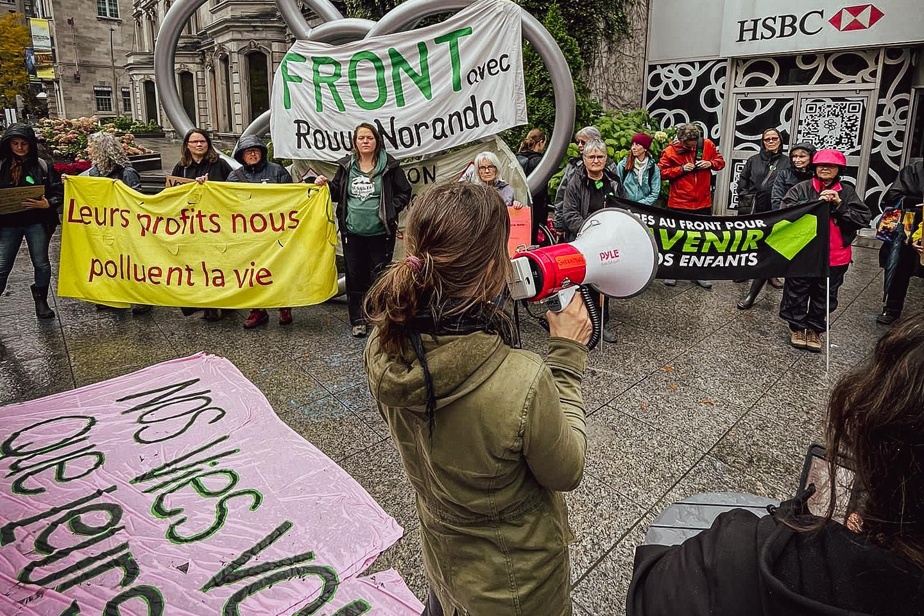(Montreal) The rain did not prevent around thirty people from the Mères au front collective from demonstrating in Montreal on Saturday afternoon to ask the government of François Legault to withdraw the permit granted to the multinational Glencore to operate the Horne Foundry , in Rouyn-Noranda, in Abitibi-Témiscamingue.
The plant, which processes copper concentrates, has been of concern for several years due to its emissions of arsenic into the air, which pose health risks. The collective estimates that the foundry currently emits 22 times more arsenic into the air than the Quebec standard allows.
Equipped with raincoats and umbrellas, participants in the demonstration gathered around 1 p.m., in front of Prime Minister Legault’s office on Sherbrooke Street West, in downtown Montreal.
“Our lives are worth more than their profits”, and “here, now, for the future of our children”, chanted the demonstrators, most of whom wore a green heart-shaped pin on their coats, the symbol of Mothers in the World. forehead.
Members of the group for the defense of the environment traveled from Rouyn-Noranda to the metropolis to participate in the demonstration. Jennifer Richard-Turcotte was one of them.
“This mobilization is not running out of steam, there is no social acceptability,” said Mr.me Richard-Turcotte, referring to the demonstration which brought together hundreds of people in Rouyn-Noranda last August.
We find the deadlines for reaching Quebec standards really too long. We would like the government to modify the ministerial authorization it grants to Glencore, so that the standards are respected, here in Quebec, everywhere as in Rouyn-Noranda. We think we deserve to have our health protected, the health of our children, more quickly than what is proposed.
Jennifer Richard-Turcotte
In March, Environment Minister Benoit Charette granted a five-year ministerial authorization to Glencore for the smelter.
The document states that Glencore must develop an action plan to achieve the provincial standard of 3 nanograms per cubic meter (ng/m3) and file it no later than December 31, 2027.
Lucie Huard, originally from Abitibi, believes that the case of the Horne Foundry is “symbolic of everything that is happening at the environmental level”.
“I spent my childhood and adolescence in Noranda. I know the environmental impacts caused. Back then it was the mine and the smelter, now it’s the smelter,” she said, holding a banner.
“I remember as a teenager going for a walk on the shores of Lake Osisko, then crying just seeing the red earth there,” she continued, with tears in her eyes.
Members of Mothers at the Front in Montreal also participated in the demonstration to show their solidarity.
The blackmail (that Glencore) is doing to the government is not admissible, and for the government to accept this blackmail is not admissible either
Valéria Moreau
“It’s a company that has money, which could, based on what the population tells us, update its infrastructure,” she added.
The Horne Foundry said last March that the concentration of arsenic it emitted into the air in 2022 was 73 ng/m3less than in 2021, but more than in 2020.
In a document published on its site, Glencore Canada indicates that for last year, “the annual average of arsenic at the legal station” of the Horne Foundry “is 73.1 ng/m3which confirms that our reduction projects are working.”
With information from Stéphane Blais
